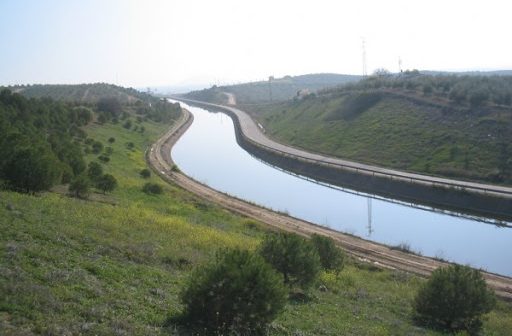This project seeks to structurally transform water management within the Comunidad de Regantes de la Real Acequia del Jarama, in a context marked by water scarcity, environmental degradation, and tensions around equitable access to water. Located in the highly stressed Jarama River basin—a tributary of the Tagus—this irrigation community faces increasing challenges due to outdated infrastructure, inefficient irrigation practices, and unequal water distribution among users.
In response, the project proposes a comprehensive strategy that simultaneously addresses three key dimensions of water impact:
The project is supported by cutting-edge technologies such as smart valves, field sensors, weather stations, and interconnected SCADA platforms, alongside traceability and reporting tools like Aqua Positive. A participatory approach ensures that irrigators play an active role in implementation and system oversight.
The project is structured under the VWBA 2.0 framework, applying three technically validated and auditable methods: A-2 (water use efficiency), A-4 (water quality improvement), and A-5 (equitable access). These methodologies, aligned with the CEO Water Mandate and Science-Based Targets for Nature (SBTN), enable the quantification of Water Benefits (VWBs), ensure additionality and permanence, and allow for credible, traceable reporting to platforms such as CDP, SBTi, and ESRS.
To address these structural, social, and environmental challenges, the project proposes integrated, transformative interventions:
Implementation is progressive, participatory, and technically robust, integrating infrastructure upgrades, system digitization, and agricultural transition. It begins with a social, technical, and environmental baseline, validated through fieldwork and community input.
Key infrastructure actions include:
Construction will be phased and coordinated with users to avoid disrupting services. Training workshops on data interpretation, system use, and sustainable agriculture will ensure long-term adoption.
Once operational, the system enters a validation phase based on VWBA 2.0 and WQBA indicators. Flow rates, efficiency per hectare, return water quality, and distribution equity will be monitored and reported via Aqua Positive, enabling the quantification of Water Benefits and public reporting.
The management model will be institutionalized through operational protocols, maintenance agreements, and community governance frameworks—positioning the project as a replicable benchmark for resilient, efficient, and equitable agricultural water use.
This project arises in response to a critical situation in agricultural water management in one of the most pressured regions of the Tagus basin. The current open-channel, manual system is marked by losses, inefficiency, and distribution conflicts.
Paired with chemically intensive agriculture degrading water quality, these challenges threaten the ecological health of the Jarama River and its ability to support diverse uses and biodiversity.
The proposed modernization focuses on three pillars: efficiency, quality, and equity. Technically, it envisions a shift toward a smart pressurized system with full monitoring and control. Regenerative agriculture will reduce pollution loads and improve ecosystem health. A digital water allocation system will resolve access conflicts and enhance community governance.
All elements are linked to Aqua Positive, where Water Benefits (VWBs) are calculated, additionality documented, and reports generated for regulatory or certification purposes. By design, the project guarantees traceability, permanence, and scalability.
In short, this is a systemic transformation of water governance in a critical agricultural territory. A replicable model blending technology, sustainability, and water justice.

© 2025 Aquapositive. All rights reserved. Further distribution is not permitted without authorization from Aquapositive.